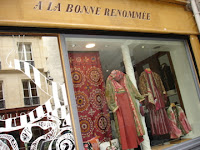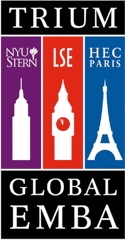Customer Experience Management - Paris
 Friday, August 10, 2007 at 11:34AM
Friday, August 10, 2007 at 11:34AM 
Krygyzstan. Where the heck is that?
It abuts Tajikistan and Uzbekistan. That's where. Oh, and it shares a border with far western China.
This part of Eurasia has been independent of the USSR/Russia since the early 1990s and, according to the great CIA World Factbook, is about the size of South Dakota. Its gross domestic product is hovering around $10billion USD (that comes to just over $2000 USD per capita, PPP), and it exports cotton, tobacco and wool, as well as some harder goods for industry and a few things, like meat, that perish and so are used in the region.
There's no question that the Kyrgyz people and fashion are both solid and a bit exotic to many of us in the West. My wife visited there a while ago and witnessed a sixtieth anniversary celebration of the end of World War II, when Kyrgyzstan's citizens fought for the USSR against Nazi Germany. Old men of Russian and Eurasian descent, in tightly fitting military uniforms, proudly marched through downtown Bishkek. Their families, dressed mostly in clean, practical Western clothing, proudly lined the streets. The grandchildren and great-grandchildren, beatific, lovely, welcoming and joyful, dotted the parade route. (The photos Angela took are breathtaking.)
You can find Eurasian jewelry in many European countries at low prices. And you can find Eurasian wool caps and cotton clothing at low prices. So, whatever "exoticism" that might exist in their exports are getting discounted in the markets and therefore in the minds of buyers. They're just not going to pay a lot for stuff from Kyrgyzstan.
Then, there's "Kyrgyzstan in Paris." See the photo above. The styles in the shop window are definitely Eurasian. The materials, the patterns. They are exactly like the outfits worn in and out of Bishkek. That's why I stopped short when I saw the store in Paris -- the merchandise in the window was identical to what I'd seen in Angela's photos from her trip.
But there's a bit of a difference with these clothes. They're all made in France.
And the shop, A La Bonne Renomée, sells them for a pretty penny. (Un charmant centime-euro?)
So, what's the product? What's the brand? Is it enough to say on the tag that one of these beautiful items is "Made in France by French artisans," which is my best recollection of what the tags actually say? Even if these items are virtually identical in pattern and styling to actual Kyrgyz clothing?
This raises to me the very interesting fact that the value of a luxury brand is often tied to a designer or to a "fashion country" (most European luxury goods originate in France or Italy).
If you walk into this shop, set on a fashionable corner in Paris' bustling Marais district (at 26 rue Vieille du Temple), you'll find all the offerings beautiful, exotic, suggestive of Eurasia. The merchandising is gorgeous -- hardwood blond floors, airy high ceilings, warm but clear spotlighthing. It is a Paris boutique. But you'll definitely "feel" as though most of these products are just Eurasia put through a Paris fashion filter.
What aspects of fashion designers or "luxury countries" create value in the products? In A La Bonne Renomée, the only significant difference between Kyrgyz clothing and what it sells is that they made them in France. Hence, we learn, you can charge a heck of a lot more. (More than would be expected from the differential in labor costs.)
I'm obsessed with the topic and have done a lot of research, on the ground and in journal articles, about the role that country origin plays in product and pricing perceptions. (The recent TRIUM/NYU events in Florence focused in part on the luxury market. It was a feast of ideas.)
As the world goes increasingly global (Kyrgyzstan was the first Eurasian country admitted to the World Trade Organization), and borders become more fluid, a product in one country will have its "country of origin" effect diminished. In fact, many products are so replete with parts pulled from all over the world that it's hard to say which country is really the originator.
Nevertheless, nevertheless. Country branding has a value that will persist beyond any reasonable analysis of a product's parts. This is good, particularly when that value is real (see my article on Camembert below). If your county's wines really ARE better, or at least unique and noteworthy, being able to charge more can have a measurable affect on your balance of trade, and the value of your currency, and bond prices.
LEFT IMAGE: A bargain-priced bijouterie on the Right Bank in Paris, selling authentic Eurasian jewelry.
And so, over time, I predict countries will spend more and more money branding themselves. And, I hope, they will also look inside their borders for what is truly special, and will preserve it.
As for A La Bonne Renomée, I love their stuff, and their vision for making Central Asian clothing fashionable. After all, part of what makes fashion so pricey is that it says something about YOU -- it's classier than wearing a bumper sticker on your car that says, "Uzbekistan ROCKS", and more comfortable than a tattoo that says, "This land is Eurasia, this lands is my Asia."
You can check out the boutique's site (in English) here. [Si vous etes francophone, voila un lien pour un blog avec une article en archive selon le magasin. C'est un blog tres sympa et intelligent, mail l'auteur a installé des plug-ins pour les pop-ups sexuel, donc fait attention.]




Reader Comments